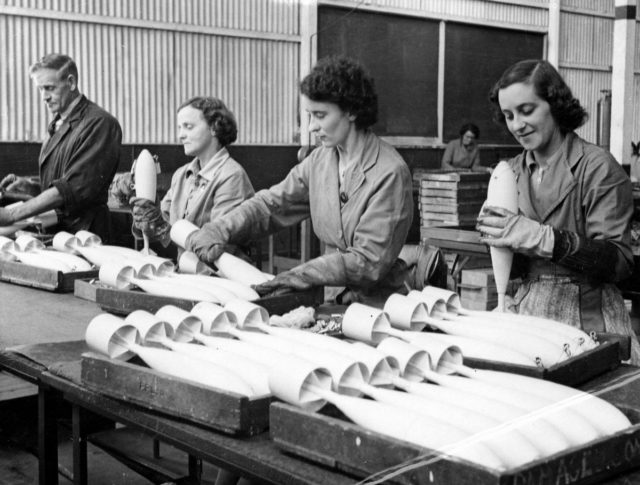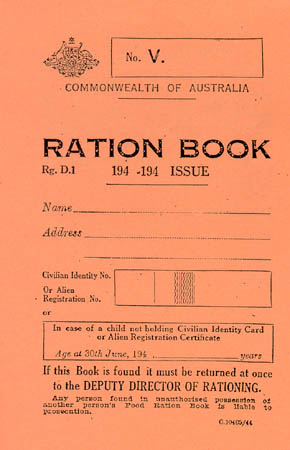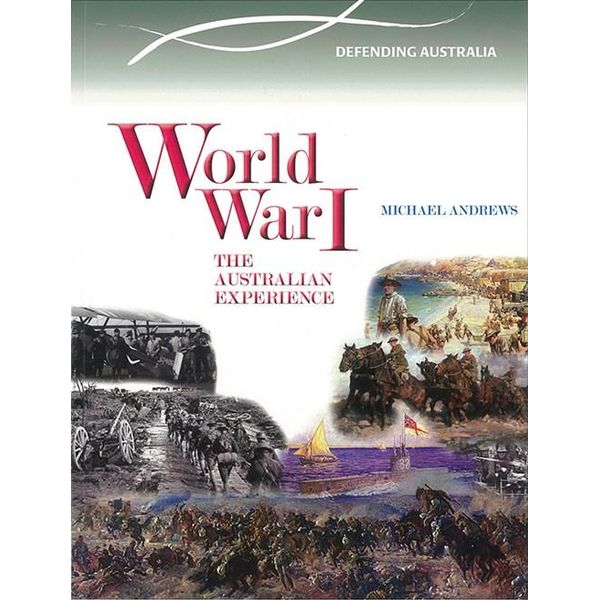



Source: War History Online
World War II not only changed the lives of those on the front line or living in active military areas; the people left behind at home also faced radical changes to their way of life. Read through the resources below to learn more about the home front in World War II.
During the Second World War Australians at home did not suffer the miseries and privations that many civilian populations in other parts of the world had to endure, but the war did have a profound impact on the Australian home front. Read through this website to learn more.
In February 1942, many Australians thought that the Japanese would invade Australia. Anticipating enemy air attack, blackout restrictions were introduced and air raid warning instructions issued. Barbed wire was also strung across many east coast beaches. To face this threat all Australians, men, women and children, were urged to put their backs into the war effort. Indeed, the adult population was mobilised for war. Women took new roles in essential industries working in what had previously been male-dominated areas.
Other men and women joined voluntary organisations such as the Red Cross or they helped to erect and patrol coastal defences or spot aircraft and shipping. School children collected bottles, newspapers, old tyres or anything else that could be recycled for the war effort. There was an unprecedented demand for food and other products like cotton, not only for the troops overseas and the people at home, but also for the American troops who were starting to arrive in Australia in large numbers. In June 1942, rationing was introduced, and ration books were issued for food and clothing. Two months earlier, in April, the government had launched 'Austerity' war loans to raise money for the war effort. Everyone was encouraged to go 'all in' to support Australia and Australians at war. Read through this article to learn more.
Read through this website to learn more about the conscription debate in Australia during World War II.
In the early years of the war, there were fears that the Australian mainland would come under direct attack. In cities as far south as Melbourne, people dug air raid shelters in their back yards and practised responding to gas attacks. Cities endured blackouts at night as a defence against bombing raids, which fortunately never came. Read through this website to learn more.
Australians began to experience shortages of almost everything they needed in daily life. At the time of World War II, most of them drank tea, not coffee. When the Japanese captured many of the countries that grew the tea supplied to Australia, this caused severe shortages. Enemy action in the Pacific also disrupted the normal supply of goods by ship to Australia. Australian troops abroad had to be supplied with food produced in Australia, and when thousands of American troops arrived in Australia to fight the war in the Pacific, they also had to be fed.
To ensure that everyone received a basic amount of essential supplies such as meat, butter, sugar and tea, the government brought in a system of rationing. Read through this website to learn more.
The British Prime Minister Winston Churchill made it clear that, if forced to choose, he would use English troops and equipment to defend England itself, rather than helping to protect Australia against the Japanese in the Pacific. The Australian Prime Minister John Curtin then called on America for help. Many older Australians who retained the traditional loyalty to England were shocked by this new allegiance.
America responded, and from early 1942, thousands of American troops began arriving in Australia, preparing to fight the Pacific war. By 1943, there were 250,000 Americans stationed in Melbourne, Sydney and Brisbane. Read through this website to learn more.
The children of Queensland were directly and indirectly affected by the war years. Unlike the young in the United Kingdom and other locations across the globe, there was no immediate threat of injury or death from enemy action, but their everyday lives were changed. Coastal schools were moved or buildings requisitioned and alternative sites were required. Many children had parents in the services and many others had fathers and mothers overseas, adding a constant fear of when or if they would see them again. They were subjected to air raid drills and learnt to do without many of the peace time benefits of life in Australia through rationing. The war added an element of adventure. Read through this website to learn more.
To aid the war effort, rationing of essential commodities such as food, clothing, rubber and petrol was instituted in all Allied countries early in World War II. It became patriotic to ‘go without’ luxuries in support of troops overseas and industrial production of equipment and supplies for the forces. Read through this website to learn more.
Before the declaration of World War II in September 1939 Queensland was not a heavy industry state. Its industries were geared to primary production and serving the needs of primary producers. The war was to change that. Read through this website to learn more.
Rationing regulations for food and clothing were gazetted on 14 May 1942. Rationing was introduced to manage shortages and control civilian consumption. It aimed to curb inflation, reduce total consumer spending, and limit impending shortages of essential goods. The broad reasoning behind the introduction of rationing was to ensure the equitable distribution of food and clothing. It was also hoped that a cut on consumer spending would lead to an increase in savings, which in turn could be invested in war loans. Read through this website to learn more.
The Pacific war transformed Australia. Air-raid precautions were quickly implemented, with sandbags piled up around public buildings to minimise damage, neighbourhood bomb shelters erected and trenches dug in public parks. Dimmed night lighting was enforced to protect cities and industrial hubs from aerial attack, and was often invoked in artistic and literary works as a potent symbol of war’s secrecy and disruption. Read through this article to learn more.


Sydney, NSW, 1941. Soldiers gather in front of a building with their kitbags and rifles to say goodbye to family and friends before receiving orders to embark on a troop transport ship to carry them to the Middle East for overseas service.

Melbourne, Victoria, December 1942. Twelve members of this family, five of whom are shown, are in the services and one is in munitions. On the right is Mrs I. Wilson, who has five sons in the army, talking with her daughter and two nieces, all members of the Australian Women's Army Service (AWAS), whose husbands are on active service, and her daughter-in-law, a munitions worker.
Early in the war, the threat of air raids was taken seriously, even in cities as far south as Melbourne. As it turned out, Darwin, in the far North, was the only Australian city ever subjected to an air-raid.
Early in the war, it was feared that Australian cities such as Melbourne and Sydney would come under attack from air-raids, and many suburban householders dug shelters in their backyards. These women are practising for the cameras, as the raids themselves never came.
This woman takes a precarious perch (and in high heels) to nail up a blanket so that her home will show no lights in the event of an air raid, while her daughter looks on. As enemy aircraft would use the lights of a city at night to guide them to their targets, blackouts were an important part of civil defence.

Food became scarce during the war, and civilians at home were encouraged to be as self-sufficient as possible, by growing vegetables and keeping chickens in their backyards. Even some public parks were dug up for vegetable gardens.
Victory Loans were the government's way of raising much-needed money from the savings of soldiers and civilians. These loans were paid back with interest after the war. This poster encourages people to think of it as a test of strength, against the hated figures of Adolf Hitler on the left, and Hideki Tojo, the Japanese Prime Minister, on the right.
Artist unknown, lithograph, 1944

During the war, food became scarce: there were fewer workers to grow it, and much of it had to be sent abroad to feed the troops. Saving food at home became crucial. 'Mrs. Housewife' might not have actually been touched by a magic wand, but she was expected to run a tight kitchen.
Argus 7 Dec 1943 p.4
Britain ran short of many things during the war, including children's toys. Australian women responded by making large numbers of soft toys (including many kangaroos) for donation.
Photographer unknown, c.1944

Commonwealth of Australia ration book. No. V B 990021. 'SPECIMEN' is stamped on all pages. On inside cover is printed instruction on 'How to use your ration book'. The book contains pages of coupons for clothing, tea, sugar and food. The back cover is covered in rationing slogans such as 'Rationing means FAIR SHARING !' and 'PLAN your Purchases, and COUNT YOUR COUPONS !'

Poster depicts a housewife throwing cans of food at a twisted caricature of a Japanese soldier. The title runs across the top half of the poster, in red and blue ink. The housewife, who is drawn in black and white, is in the background, and the Japanese soldier, who is also in monochrome, except for his red lips, is in the foreground of the right hand side.The cans of food are quite a devestating weapon; if used in this fashion they could have been quite effective missiles. Food rationing was pervasive in war-time Australia and this poster implores households to keep up the effort in economising food.
Press coverage of the American troops in Melbourne emphasized the wholesome and familiar - eating ice cream, drinking Coca Cola and coffee, and different styles of dancing and music-making.
Photographer unknown, c.1943

Many young Australian women married or became engaged to American servicemen, imagining that they would go back to the kind of America they had seen in the movies. This newspaper article tries to enlighten them.
Argus 17 Aug 1943 p.6

Such books containing coupons for food and clothing were issued to all Australians, including children.


 Our home front 1939-1945 : the tears, the tradgedy, the laughter: from the pages of the Herald and the Sun
by
Our home front 1939-1945 : the tears, the tradgedy, the laughter: from the pages of the Herald and the Sun
by
 World War II : the Australian experience
by
World War II : the Australian experience
by